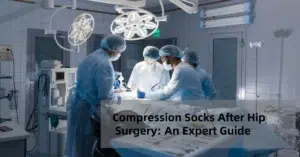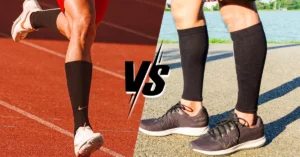Compression socks are one of the most incredible inventions. They apply pressure to ensure that blood continues circulating. This feature is particularly beneficial for people who spend most of their time on their feet, like nurses and pilots. Furthermore, they help reduce swelling and prevent leg pain.
But here’s the catch: they must be the perfect size. If they are too tight, they can be uncomfortable and even aggravate blood pressure issues. On the other hand, if they are not tight enough, they won’t be effective.
Hence, choosing the right size is imperative. Well-fitted compression socks support your legs throughout the day, alleviate tiredness, and maintain proper compression levels. For athletes, they can also speed up recovery after workout sessions. A snug-fitting pair of compression socks can significantly affect how your legs feel and overall health. So, let’s ensure we get the right compression level for comfy, happy legs!

Photo by Mikhail Nilov|Pexels
How Do Compression Socks Work?
Compression socks are designed to apply gentle pressure to the leg muscles, helping improve blood flow from the feet back to the heart. This is especially beneficial for those with circulation issues due to long periods of sitting or standing.

Source: https://www.mastertonfootclinic.co.nz/foot-facts/compression-socks/
Athletes often prefer compression socks and stockings for their recovery-enhancing properties. They use them to speed up the recovery process after intense workouts by reducing muscle soreness and fatigue, allowing for more rigorous training and faster recovery.
Considering the crucial role of compression socks in promoting blood circulation and other health benefits, it’s imperative to select the correct size to ensure their effectiveness.
How to Measure for Compression Socks
Selecting the right pair of compression socks is essential for improving blood flow, preventing blood clots, and reducing leg swelling. Accurate measurements of your calf and ankle are crucial. Here are three easy steps to ensure you get the right fit.
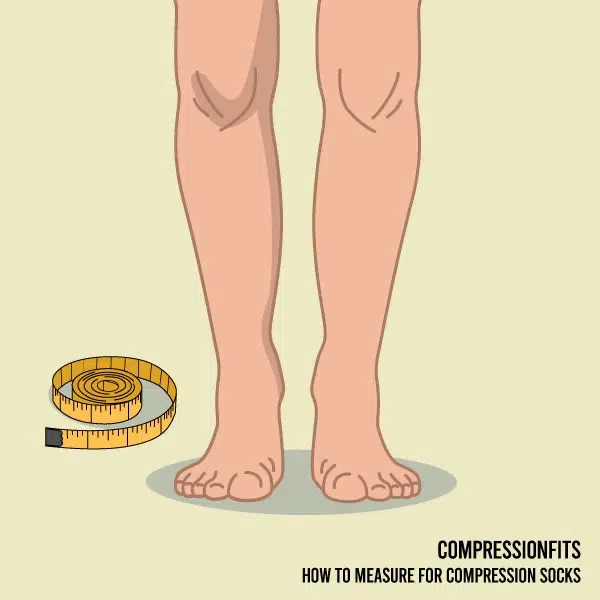
Measuring Calf Circumference
Getting the right calf measurement is key when choosing compression stockings that offer the best support and comfort. Follow these simple steps:
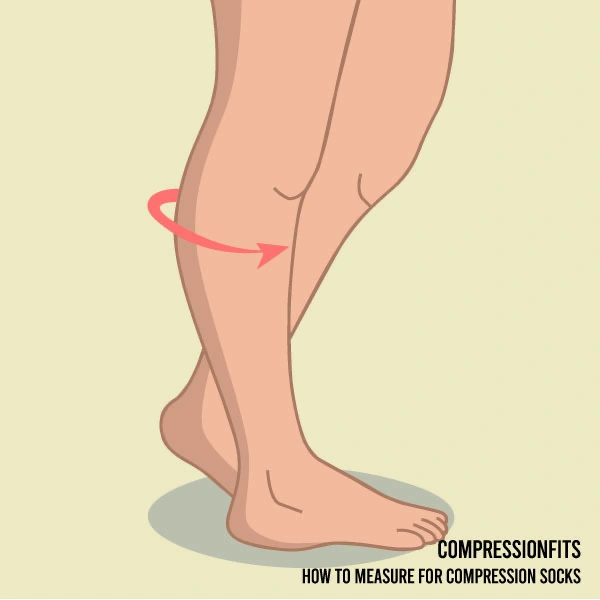
Step 1: Finding the Thickest Part of Your Calf
Stand upright on a flat floor, distributing your weight evenly between both feet. Gently apply your hands to massage your calves, and identify the thickest area. This area typically lies between the knee and the ankle, but the exact location can vary from person to person.
Step 2: Wrapping the Measuring Tape Around Your Calf
Once you’ve identified the widest part of your lower leg, use a flexible measuring tape to measure its circumference. Ensure the tape goes around your lower leg and is applied flat against your skin. Standing in front of a mirror can provide immediate feedback on how well you are measuring. Moreover, having a friend double-check your measurements can help avoid mistakes.
Step 3: Recording Your Measurement
Record your calf circumference measurement and take it twice to ensure consistency. Consult the sock companies’ sizing charts to find the size that corresponds to your measurement. Keep in mind that sizing models can vary between brands, so always check the specific chart before buying.
Measuring Ankle Circumference
When selecting compression stockings or garments, knowing the precise circumference of your ankles is crucial for a perfect fit.
This procedure is simple; however, precision is vital for accuracy. Following the rules below will improve your comfort, prevent injuries, and support your feet and legs. Before you start, ensure you have a flexible tape measure on hand.
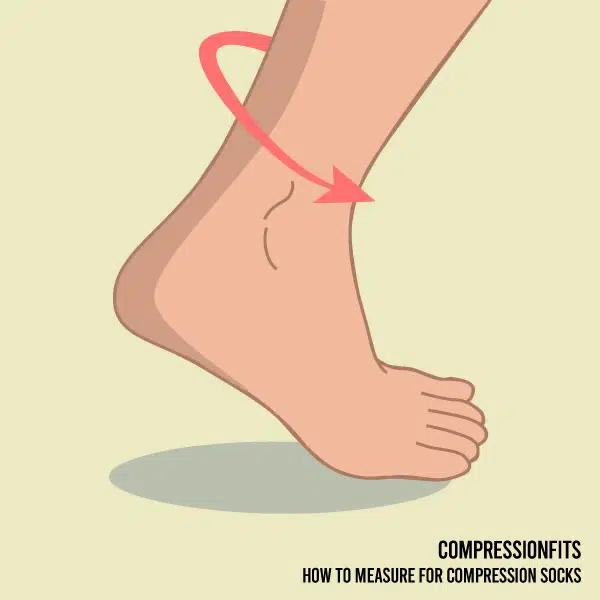
Step 1: Preparing for Measurement
Find a comfortable place to sit and put your foot into a shoe. Make sure you are relaxed and your foot is flat on the floor. This position helps ensure an accurate measurement by keeping your foot and ankle in a neutral alignment.
Step 2: Finding the Measurement Point
Finding the correct area to measure is crucial for proper ankle measurement. You should target the narrowest section of your ankle – often, it can be found just above the ankle bone. This measurement is important as it helps determine the right fit for compression wear, ensuring optimal support and comfort.
Step 3: Wrapping the Measuring Tape Around Your Ankle
Locate your measuring tape and wrap it around your ankle at the specified point. The tape should be tight enough to stay in place but without digging into the skin or causing discomfort or irritation. Ensure it’s not so tight that you can’t easily slip a finger underneath it.
Spend extra time checking the measurement to ensure accuracy, and take several readings to confirm that you’ve measured the same spot consistently.
Step 4: Recording Your Measurement
Once you’re sure about the measurement, write it down. You should also record your shoe size, along with your ankle circumference. By combining these two measurements, you will find the right size for a better fit.
Determining Leg Length for Knee-High Socks
Selecting the perfect pair of knee-high or thigh-high compression socks involves more than just pattern or color preference; accurate measurements are crucial to ensure a perfect fit that stays in place throughout the day.
First, you need a measuring tape long enough to wrap around your leg with its ends overlapping. This tool is essential for getting the exact measurement of your legs.
Achieving comfort and a desirable style look are all embedded in the length and width of your knee-high socks.

Step 1: Measuring Leg Length
First, determine a suitable location for the heel of your sock. tart measuring from the level of your knee bend to the desired top end of the sock, ensuring it will lay flat against the skin.
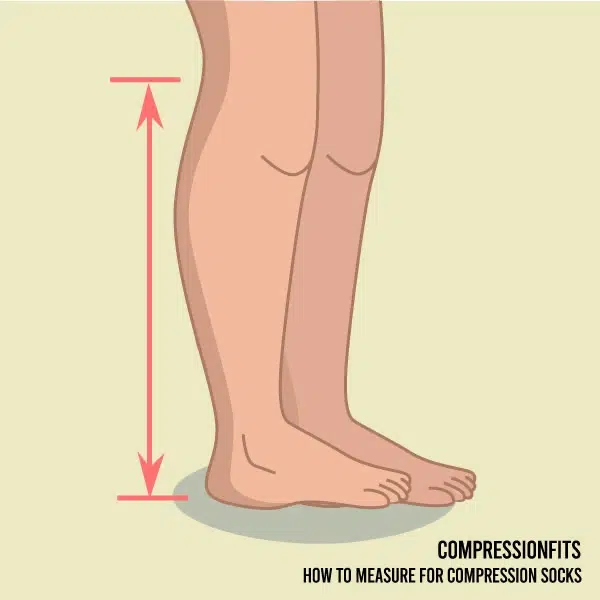
Measure the distance from the heel to the bend of the knee. With this foot measurement, you can determine the total length needed for the sock.
Step 2: Determining Calf Circumference
This measurement is as important as the ankle circumference. Wrap the measuring tape around the widest part of your calf to find the size indicated on the tape. This step ensures the socks will fit comfortably without being too tight.
Finally, use these two measurements and compare them with the sizing guide provided by the sock manufacturer. Each brand has its sizing, so refer to the size guides corresponding to your preferred socks.
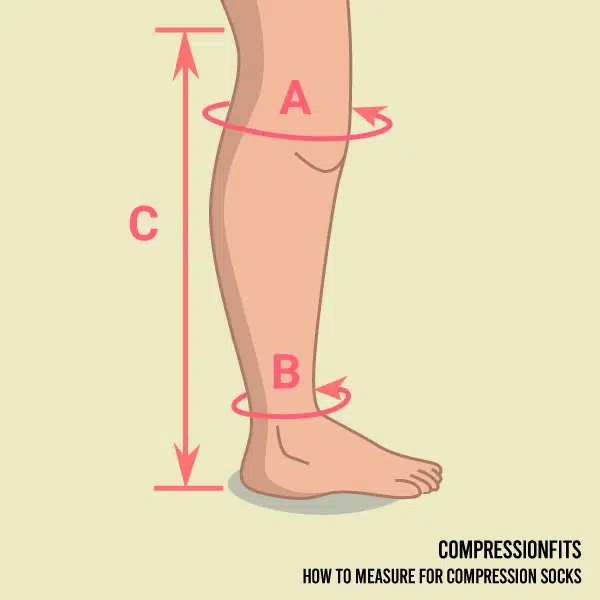
Measuring for Thigh-High Socks
Thigh-high socks are both stylish and comfortable, but to ensure they fit perfectly, accurate leg measurements are essential.
Step 1: Measuring Leg Length
For thigh-high socks, start measuring from the same point on the heel as you would for knee-high socks. Extend the measuring tape up to the midway point between the bottom of your buttocks and the top of your knee, which is typically where you want the top of the sock to be. This ensures the socks will be neither too long nor too short.
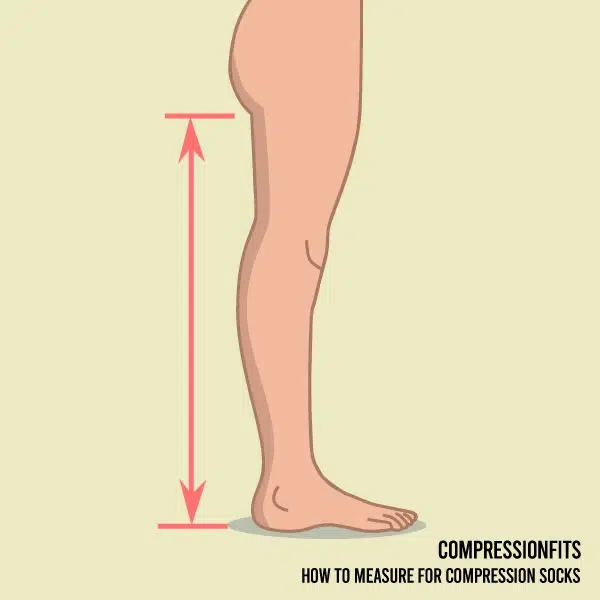
Step 2: Ensuring the Perfect Width
While standing, measure the circumference of your thigh at the point where you want the top of the sock to sit. It’s helpful to have someone assist you with this measurement accuracy. Having a friend help with the measurement can prevent potential fitting issues and is especially useful for socks that reach the calf area. They can ensure the measuring tape is level and positioned correctly to avoid a loose or overly tight fit, ensuring precise width and length measurements.
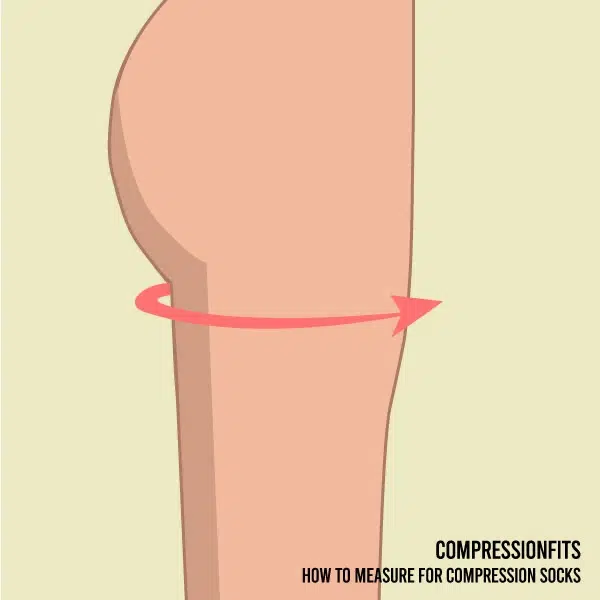
Finally, compare your measurements to the sizing guide provided by the sock manufacturer.
Choosing The Right Type Of Compression
When choosing compression socks, consider the level of Compression they provide. Compression is presented in mmHg, indicating the pressure the socks will add to your feet.

Mild Compression (10-15 mmHg)
For small problems with legs and puffy veins, socks with 10-15 mmHg are good. They are great for people who have to sit or stand a lot. They also help if you’re traveling far and want to keep your legs from getting tired or swollen.
Medium Compression (15-20 mmHg)
Socks with 15-20 mmHg pressure are better for those who’ve had surgery or feel their legs are tired and heavy. If your doctor has told you about having vein problems or you notice your legs swell often, these might be a good fit.
Firm Compression (20-30 mmHg)
If you have serious leg issues, socks with 20-30 mmHg pressure, based on what your doctor says, could be necessary. They are for people with big vein problems, swelling, or skin troubles. Your doctor will tell you if you need these.
Extra Firm Compression (30-40mmHg)
For the most severe leg problems, only use socks with 30-40mmHg pressure when a doctor recommends them. These are for very special situations when a doctor has checked your legs and decides you need the strongest support.
The Final Say
Graduated Compression stockings are an absolute must to keep yourself fit. Wearing compression stockings will improve health by enhancing circulation and protecting you from developing deep vein thrombosis (DVT).
There are several sizes and numbers of products available; however, choosing the best one with the help of a size guide is very important.
If you’re unsure about which compression socks to choose, consult a healthcare provider, a professional, or your health specialist for guidance. These professionals can offer personalized support according to your health history, symptoms, and your lifestyle.

